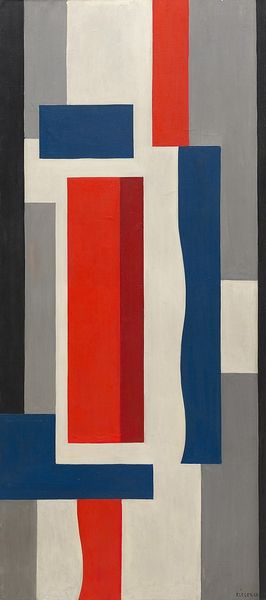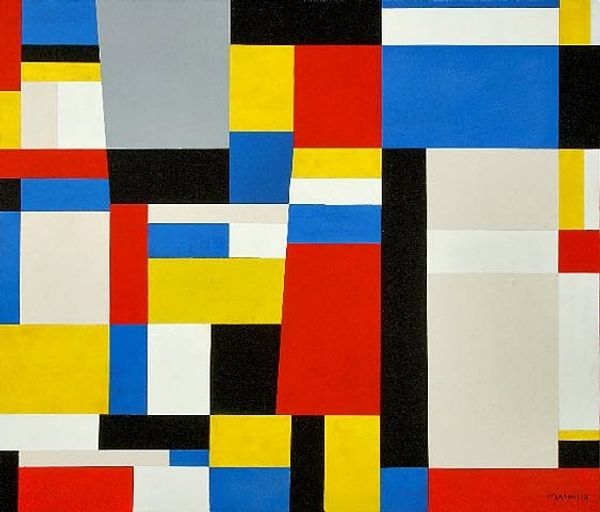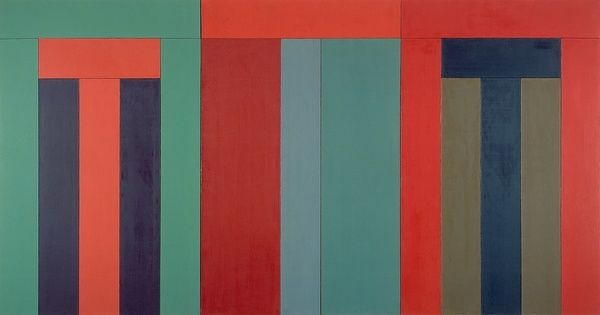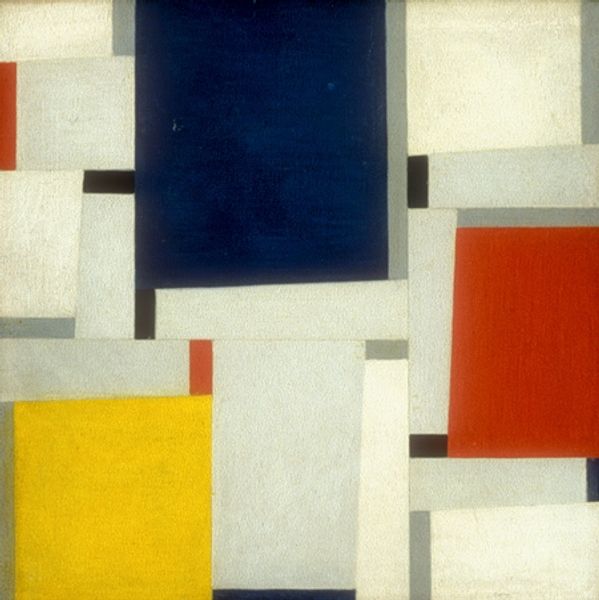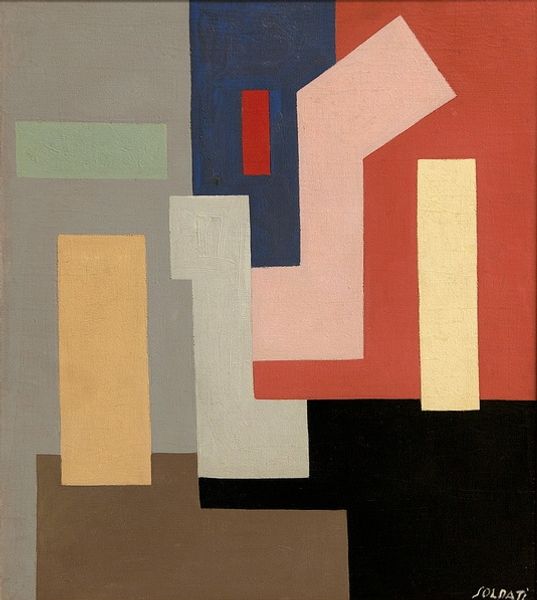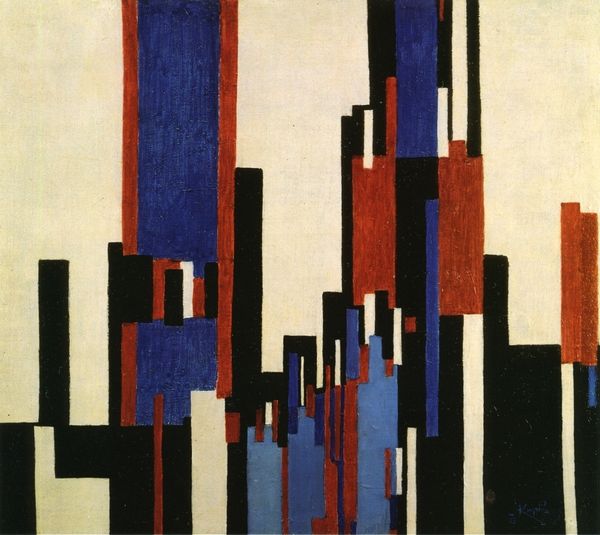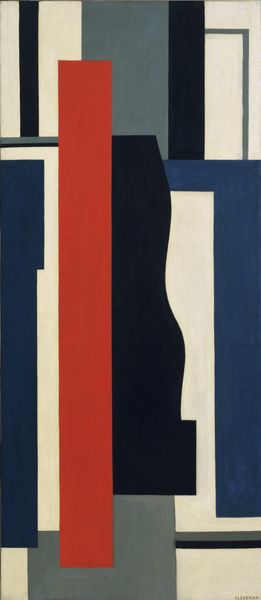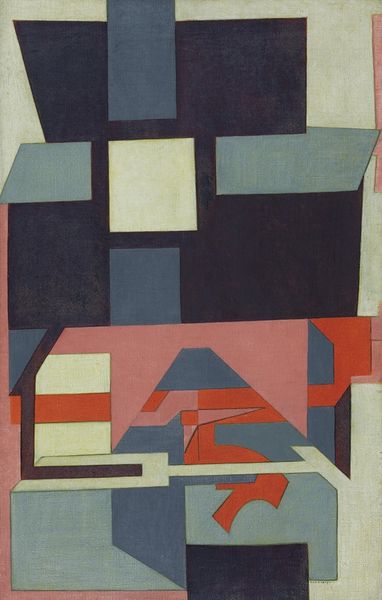
painting, oil-paint, textile
#
abstract-expressionism
#
abstract expressionism
#
abstract painting
#
painting
#
oil-paint
#
pop art
#
textile
#
oil painting
#
neo expressionist
#
geometric
#
abstraction
#
line
#
modernism
Copyright: Lothar Charoux,Fair Use
Editor: Lothar Charoux's "Untitled," created in 1956 using oil paint, strikes me as almost architectural in its arrangement. The blocks of color and strong lines suggest a city, or maybe the blueprint of one. What stands out to you? Curator: I am drawn to the way this work utilizes simple shapes—squares, rectangles, lines—to evoke a sense of depth and order. Don't you think the choice of these particular colors feels very deliberate? It makes me think about constructed realities. This imagery taps into a deep cultural memory of structure, from the grid-like city plans of ancient Rome to the towering skyscrapers of modern urban life. Editor: You see that architectural symbolism really strongly. I get the city reference but it’s more…subconscious? I initially focused more on the dynamic between the cool blues and warmer reds and yellows. How would you place this work within its historical context? Curator: Given that it was painted in 1956, this painting emerges from a period grappling with rebuilding and redefining itself. It carries this emotional weight. Do you notice how some shapes are neatly defined while others have blurred edges? Editor: Yes, now that you mention it, I do. That juxtaposition does give the piece an uneasy, almost unstable quality. I was so caught up in the colors and geometry, I totally missed that at first glance. Curator: Precisely. This is where the symbolic power lies. The artist uses a familiar visual language of geometry and structure to ask profound questions about stability and change. We search for a familiar image because the abstraction triggers deep emotions. Editor: That's a fascinating point. I hadn’t considered the post-war reconstruction angle so directly. Looking at it now, the colors feel almost…optimistic, but also perhaps a bit naive. Thanks, this was helpful. Curator: My pleasure. Art like this always reminds us that images hold complex layers of meaning.
Comments
No comments
Be the first to comment and join the conversation on the ultimate creative platform.
